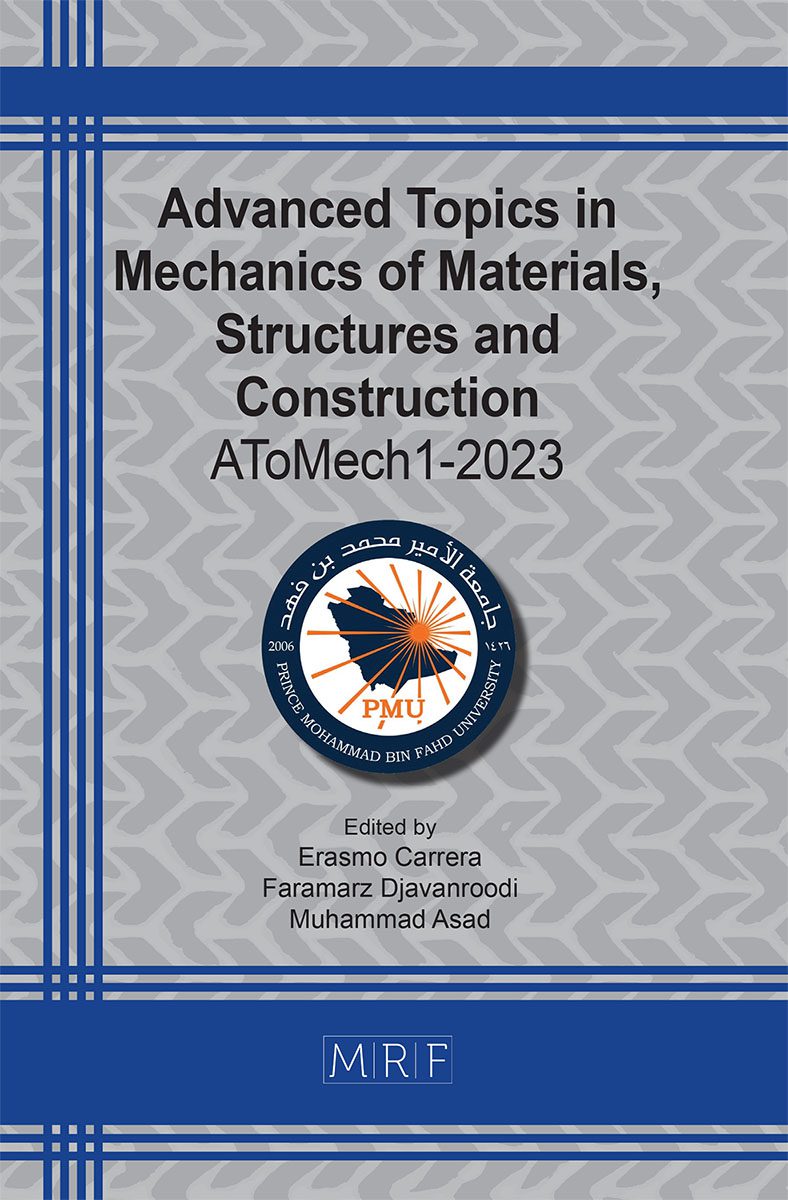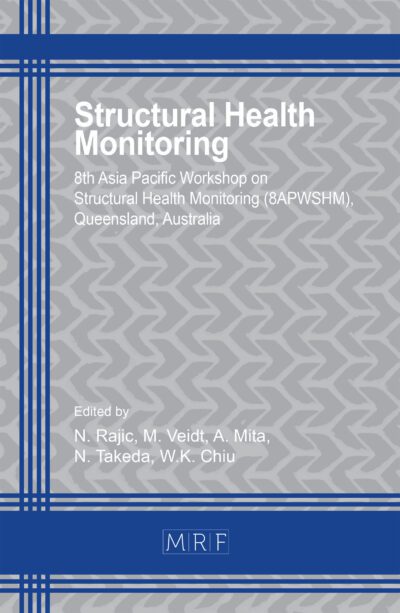Investigation of the influence of external edge restraint on reinforced concrete walls
Muhammad Kashif Shehzad, John P. Forth, Nikolaos Nikitas, Imogen Ridley, Robert Vollum, Abo Bakr Elwakeel, Karim El Khoury, Bassam Izzuddin
download PDFAbstract. Externally restraining volume changes of concrete, i.e., thermal effects and shrinkage, may result in tensile stresses and eventually cracking. Such cracking risk is controlled / mitigated by the provision of steel reinforcement, which presumes correct understanding of the cracking patterns under different types of restraint conditions. Reinforced concrete (RC) members may be restrained at their edges or end, or in many cases a combination of the two. Existing guidance on the subject is mostly based on end restrained members, however it is applied to predict the behaviour under edge restraint too. Researchers have identified that the mechanisms of cracking associated to edge and end restraints are quite different. To this purpose, findings from an experimental investigation aiming to understand the behaviour of edge restrained RC walls were utilized to validate a finite element (FE) model. Subsequently, this FE model was used to study the edge restrained walls having different aspect ratios. Cracking patterns, widths and extent appeared to greatly depend on the wall aspect ratio. The study provides clear evidence on why similar studies related to all forms of restraint are needed to support engineers in designing against cracking due to restraints.
Keywords
Edge Restraint, Crack Width, Aspect Ratio, Volume Change, Imposed Strain, Finite Element Analysis
Published online 8/10/2023, 12 pages
Copyright © 2023 by the author(s)
Published under license by Materials Research Forum LLC., Millersville PA, USA
Citation: Muhammad Kashif Shehzad, John P. Forth, Nikolaos Nikitas, Imogen Ridley, Robert Vollum, Abo Bakr Elwakeel, Karim El Khoury, Bassam Izzuddin, Investigation of the influence of external edge restraint on reinforced concrete walls, Materials Research Proceedings, Vol. 31, pp 622-633, 2023
DOI: https://doi.org/10.21741/9781644902592-64
The article was published as article 64 of the book Advanced Topics in Mechanics of Materials, Structures and Construction
![]() Content from this work may be used under the terms of the Creative Commons Attribution 3.0 license. Any further distribution of this work must maintain attribution to the author(s) and the title of the work, journal citation and DOI.
Content from this work may be used under the terms of the Creative Commons Attribution 3.0 license. Any further distribution of this work must maintain attribution to the author(s) and the title of the work, journal citation and DOI.
References
[1] E. Evans and B. Hughes, “SHRINKAGE AND THERMAL CRACKING IN A REINFORCED CONCRETE RETAINING WALL,” in ICE Proceedings, 1968, vol. 39, no. 1, pp. 111-125: Thomas Telford. https://doi.org/10.1680/iicep.1968.8172
[2] J. P. Forth, A.J. Martin, Design of Liquid Retaining Concrete Structures, Third ed. UK: Whittles Publishing, 2014, p. 175.
[3] H. Stoffers, Cracking due to shrinkage and temperature variation in walls. Stevin Laboratory, Department of Civil Engineering, Delft University of Technology and IBBC Institute TNO for Building Materials and Building Structures, 1978.
[4] G. Kheder and R. Al Rawi, “Control of cracking due to volume change in base-restrained concrete members,” ACI Structural Journal, vol. 87, no. 4, 1990. https://doi.org/10.14359/2747
[5] BS EN 1992-3, Eurocode 2: Design of Concrete Structures: Part 3: Liquid retaining and containment structures. British Standards Institution, 2006.
[6] G. Kheder, R. Al-Rawi, and J. Al-Dhahi, “A study of the behaviour of volume change cracking in base restrained concrete walls,” Materials and Structures, vol. 27, no. 7, pp. 383-392, 1994. https://doi.org/10.1007/BF02473441
[7] ACI Committee 207, “Effect of restraint, volume change, and reinforcement on cracking of mass concrete,” ACI Materials Journal, vol. 87, no. 3, 2007.
[8] P. Bamforth, Control of cracking caused by restrained deformation in concrete. CIRIA, 2018.
[9] M. Micallef, Vollum, RL, Izzuddin, BA, “Crack development in transverse loaded base-restrained reinforced concrete walls,” Engineering Structures, vol. 143, pp. 522-539, 2017. https://doi.org/10.1016/j.engstruct.2017.04.035
[10] M. Micallef, R. L. Vollum, and B. A. Izzuddin, “Cracking in walls with combined base and end restraint,” Magazine of Concrete Research, vol. 69, no. 22, pp. 1170-1188, 2017. https://doi.org/10.1680/jmacr.17.00026
[11] M. K. Shehzad, J. P. Forth, and A. Bradshaw, “Imposed Loading Effects on Reinforced Concrete Walls Restrained at Their Base,” Proceedings of the Institution of Civil Engineers-Structures and Buildings, pp. 1-29, 2018.
[12] J. P. Forth, “Chapter 7 Edge Restraint, The Concrete Society Technical Report No 67,” in “Accommodating Movement in Concrete Structures,” 2008.
[13] Fib model code for concrete structures 2010, 2010.
[14] BS EN 1992-1-1, Eurocode 2: Design of Concrete Structures: Part 1-1: General Rules and Rules for Buildings. British Standards Institution, 2004.
[15] W. Schleeh, “Imposed stresses in the walls one-side restrained,” Beton- Und Stahlbetonbau, vol. 57, no. 3, pp. 64-72, 1962.
[16] F. Midas, MIDAS FEA: Analysis and Algorithm (Advanced Nonlinear and Detailed Analysis System). MIDAS IT, 1989.
[17] D. A. Hordijk, Local approach to fatigue of concrete. TU Delft, Delft University of Technology, 1991.
[18] B. Klemczak and A. Knoppik-Wróbel, “Analysis of Early-Age Thermal and Shrinkage Stresses in Reinforced Concrete Walls (with Appendix),” ACI Structural Journal, vol. 111, no. 2, 2014. https://doi.org/10.14359/51686523
































